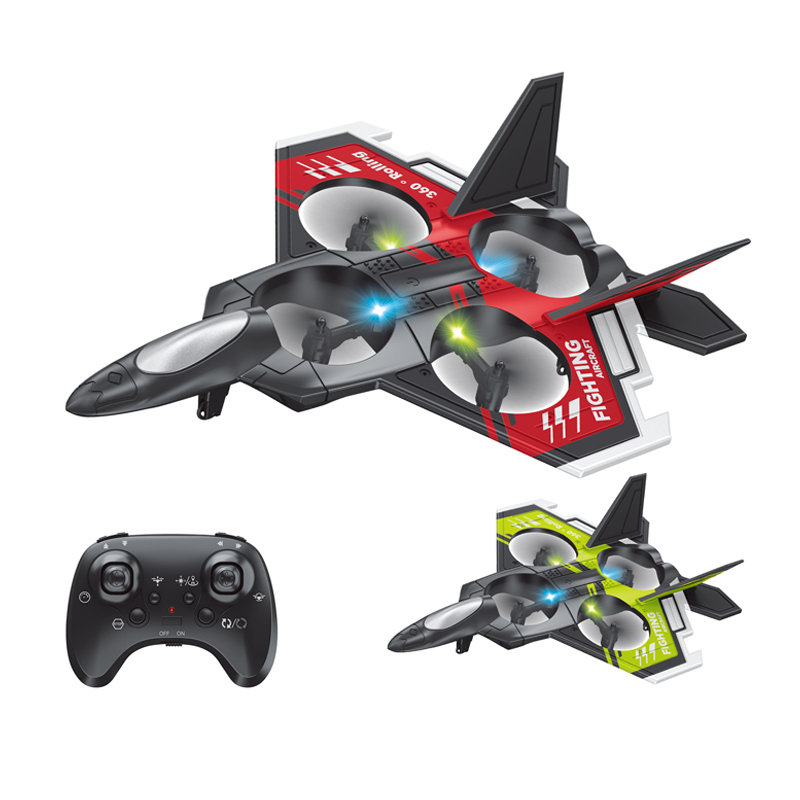Types of RC Aircraft
2024-06-12
RC aircraft, short for radio-controlled aircraft, are model airplanes or helicopters that are remotely controlled by an operator on the ground using a handheld radio transmitter. These aircraft come in a variety of types, sizes, and designs, ranging from simple toy-grade models to sophisticated hobby-grade aircraft used in competitions and recreational flying. Here's an overview of RC aircraft, including their types, components, operation, and common uses:
Types of RC Aircraft:
1. Fixed-Wing Aircraft:
- Fixed-wing RC aircraft, also known as airplanes or drones, have wings that provide lift and stability during flight. They include various designs such as trainers, sport planes, scale replicas, and aerobatic models.
2. Rotorcraft:
- Rotorcraft include helicopters and quadcopters (drones) that use rotating blades or rotors to generate lift and control. They are capable of vertical takeoff and landing (VTOL) and can hover in place.
Components of RC Aircraft:
1. Airframe:
- The airframe is the structure of the aircraft, including the wings, fuselage (body), tail assembly, and landing gear. It provides the shape, support, and aerodynamic characteristics necessary for flight.
2. Power System:
- RC aircraft are powered by electric motors, internal combustion engines (gasoline or nitro), or in some cases, jet turbines. The power system also includes propellers or rotors for generating thrust.
3. Radio Control System:
- The radio control system consists of a transmitter and receiver that allow the operator to remotely control the aircraft's flight controls, such as throttle, elevator, ailerons, rudder, and flaps.
4. Flight Control Surfaces:
- These are movable surfaces on the aircraft's wings and tail that are controlled by servos and linkages. They include ailerons (for roll control), elevator (for pitch control), rudder (for yaw control), and flaps (for increased lift or drag).
5. Battery or Fuel Tank:
- RC aircraft are powered by batteries (for electric models) or fuel tanks (for internal combustion engines). The battery or fuel tank provides the energy required for flight.
6. Landing Gear:
- Landing gear includes wheels, skids, or floats that support the aircraft during takeoff, landing, and ground operations. Some RC aircraft may have retractable landing gear for improved aerodynamics.
Operation of RC Aircraft:
1. Pre-Flight Check:
- Before flight, the operator performs a pre-flight check to ensure the aircraft is in proper working condition. This includes checking the control surfaces, power system, radio system, and battery or fuel levels.
2. Takeoff:
- The operator uses the transmitter to gradually increase throttle and control the aircraft's direction as it accelerates down the runway or takes off vertically (for rotorcraft).
3. Flight Maneuvers:
- Once airborne, the operator uses the transmitter sticks to control the aircraft's attitude and movements. This includes adjusting throttle for altitude, using the elevator and ailerons for pitch and roll control, and using the rudder for yaw control.
4. Landing:
- The operator guides the aircraft toward the landing area and reduces throttle to descend. By controlling the aircraft's pitch, roll, and yaw, the operator performs a controlled landing either on wheels, skids, or floats.
Common Uses of RC Aircraft:
1. Recreation and Hobby:
- Many enthusiasts enjoy flying RC aircraft as a hobby and recreational activity. This includes flying at local parks, flying fields, or dedicated RC flying clubs.
2. Competitions:
- RC aircraft competitions include aerobatic flying, precision flying, scale modeling, and racing events. Participants compete against each other based on skill, performance, and creativity.
3. Education and STEM:
- RC aircraft are used in educational settings to teach students about aerodynamics, physics, engineering, and technology. They provide hands-on learning experiences and inspire interest in STEM (science, technology, engineering, and mathematics) subjects.
4. Aerial Photography and Videography:
- Many RC aircraft are equipped with cameras or gimbals for capturing aerial photos and videos. They are used in filmmaking, photography, real estate, surveying, and aerial mapping applications.
5. Training and Simulation:
- RC aircraft serve as training tools for aspiring pilots, providing a safe and cost-effective way to learn flight principles, navigation, and aircraft control before transitioning to full-scale aircraft.
Safety Considerations:
1. Legal Compliance:
- Operators must comply with local regulations and guidelines for flying RC aircraft, including airspace restrictions, flying altitude limits, and safety rules.
2. Training and Practice:
- Beginners should seek instruction from experienced pilots or join a local RC flying club for training and guidance on safe flying practices.
3. Maintenance:
- Regular maintenance and inspection of RC aircraft are essential to ensure safe and reliable operation. This includes checking for loose components, worn-out parts, and battery condition.
4. Environment:
- Fly RC aircraft in designated areas away from populated areas, airports, and restricted airspace. Be mindful of weather conditions, wind speed, and obstacles that may affect flight.
5. Respect and Courtesy:
- Be respectful of others' property, privacy, and safety when flying RC aircraft. Avoid flying over people, vehicles, or sensitive areas without permission.
RC aircraft offer enthusiasts of all ages an exciting and rewarding way to experience the thrill of flight. Whether for recreation, competition, education, or professional applications, RC aircraft continue to captivate and inspire enthusiasts worldwide. By understanding their types, components, operation, uses, and safety considerations, operators can enjoy the excitement of flying while ensuring safe and responsible operation.



